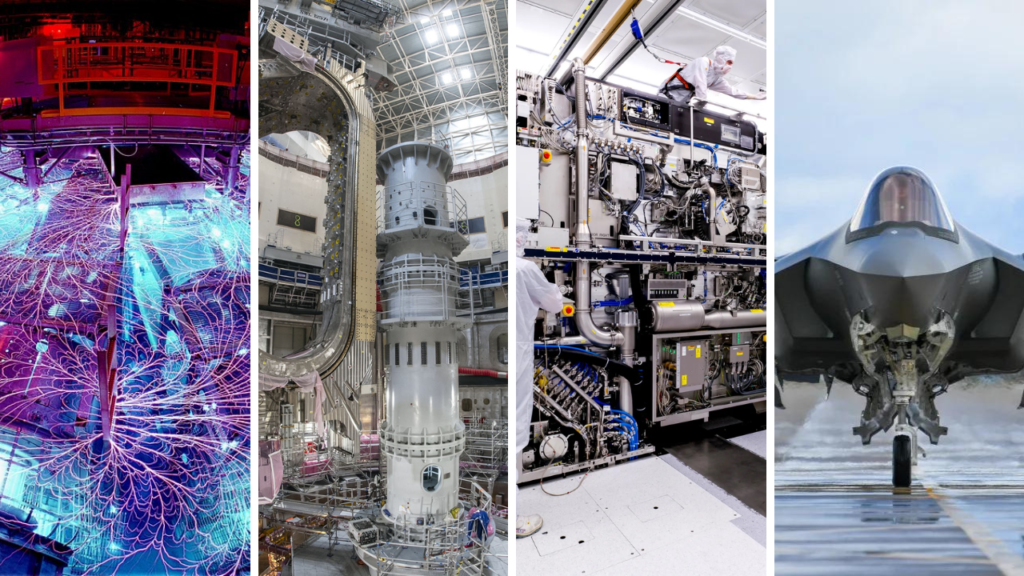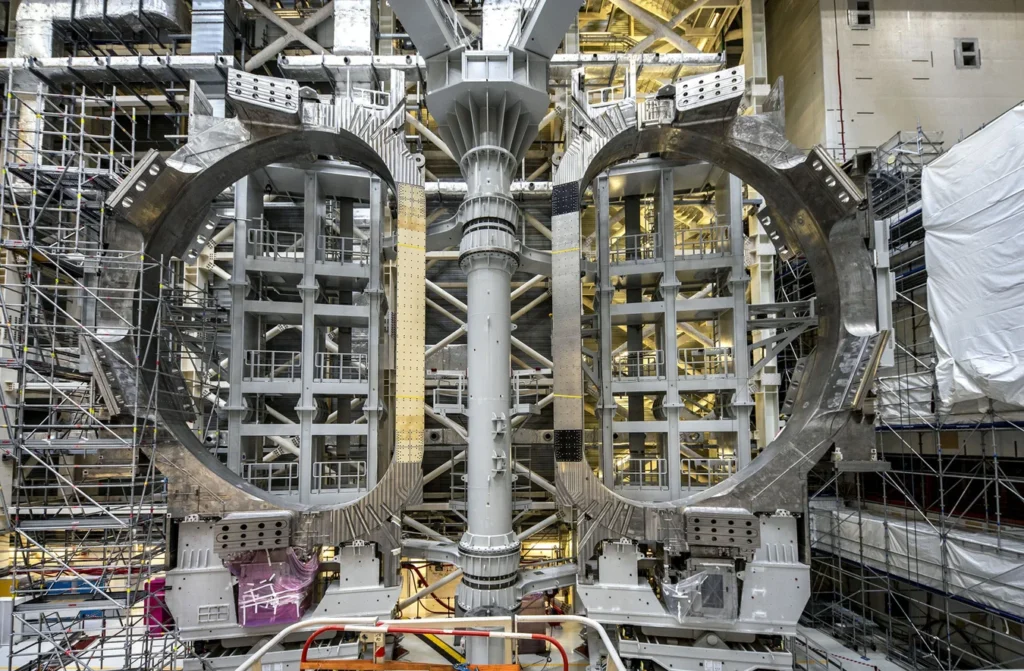Exploring the World’s 10 Most Complex Machines

From towering skyscrapers to intricate nanotechnology, innovation knows no bounds. Among these feats of human ingenuity are the world’s most complex machines, pushing the limits of technology and human capability. In this article, we embark on a journey to explore these remarkable creations, delving into their intricacies and marveling at their engineering prowess.
Unraveling Complexity: What Makes a Machine Complex?
Before we dive into the specifics, it’s essential to understand what sets these machines apart. Defining Complexity Complex machines are characterized by their intricate design, sophisticated components, and advanced functionality. They often involve cutting-edge technology, intricate systems, and extensive integration of various subsystems. Key Components of Complexity To grasp the complexity of these machines, we’ll examine the key components that contribute to their intricacy, including advanced materials, precision engineering, and intricate control systems.
Advanced Materials: The Building Blocks of Complexity
At the heart of many complex machines lie advanced materials engineered to withstand extreme conditions and optimize performance. Nanomaterials: Utilizing materials at the nanoscale enables unprecedented strength, flexibility, and conductivity, revolutionizing industries from aerospace to healthcare. Composite Structures: Composite materials combine the strengths of different substances, offering superior strength-to-weight ratios and resistance to corrosion and fatigue.
Precision Engineering: Mastering the Microscopic
Precision engineering plays a pivotal role in crafting machines with unparalleled accuracy and reliability. Tolerances and Machining: Achieving tight tolerances and precision machining ensures components fit seamlessly together, minimizing friction and maximizing efficiency. Microfabrication: Leveraging microfabrication techniques enables the creation of intricate components at the micro and nanoscale, essential for devices such as microprocessors and medical implants.
Intricate Control Systems: Orchestrating Complexity
Central to the operation of complex machines are sophisticated control systems that coordinate countless processes with precision and efficiency. Automation and Robotics: Automation and robotics streamline manufacturing processes, enhance productivity, and improve safety by replacing manual labor with autonomous systems. Integrated Circuits: Integrated circuits serve as the brains of many complex machines, executing complex algorithms and managing data with lightning speed and accuracy.
The Ten Titans of Technology: Exploring Complex Machines
Now that we’ve laid the groundwork, let’s embark on a journey to explore the world’s ten most complex machines, each a testament to human innovation and ingenuity.
1. Large Hadron Collider (LHC)
The Large Hadron Collider stands as the pinnacle of particle physics research, spanning over 27 kilometers beneath the Franco-Swiss border. Unraveling the Universe: The LHC accelerates protons to nearly the speed of light, colliding them to recreate conditions moments after the Big Bang, unraveling the mysteries of the universe.
2. International Space Station (ISS)
Orbiting 400 kilometers above Earth, the International Space Station serves as a symbol of international collaboration and scientific exploration. Microgravity Laboratory: The ISS provides a unique platform for conducting experiments in microgravity, advancing our understanding of fundamental scientific principles and paving the way for future space exploration.
3. Deep Sea Challenger Submarine
Descending to the deepest depths of the ocean, the Deep Sea Challenger submarine allows scientists to explore the mysteries of the ocean floor. Unraveling Oceanic Secrets: Equipped with cutting-edge technology, including robotic arms and high-definition cameras, the Deep Sea Challenger enables researchers to study deep-sea ecosystems and geological formations with unprecedented clarity.
4. ITER Nuclear Fusion Reactor
The ITER nuclear fusion reactor aims to replicate the process that powers the sun, offering a clean, limitless source of energy. Unlocking Fusion Power: By confining and heating plasma to temperatures exceeding 150 million degrees Celsius, ITER aims to sustain controlled nuclear fusion reactions, heralding a new era of clean energy production.
5. Airbus A380 Superjumbo Jet
The Airbus A380 redefines air travel with its sheer size, capacity, and technological sophistication. Engineering Marvel: With a wingspan of over 79 meters and the ability to carry up to 850 passengers, the A380 represents the pinnacle of aerospace engineering, combining comfort, efficiency, and reliability.
6. Three Gorges Dam
Stretching over 2 kilometers and towering 185 meters above the Yangtze River, the Three Gorges Dam is the world’s largest hydroelectric power station. Harnessing Hydroelectric Power: The dam generates renewable energy, controls flooding, and facilitates navigation, underscoring the monumental impact of human engineering on the natural world.
7. Hubble Space Telescope
Peering deep into the cosmos, the Hubble Space Telescope has revolutionized our understanding of the universe. Window to the Stars: From capturing breathtaking images of distant galaxies to studying exoplanets and dark matter, Hubble continues to push the boundaries of astronomical discovery.
8. Large Synoptic Survey Telescope (LSST)
The LSST is poised to revolutionize astronomy with its unprecedented ability to survey the entire sky multiple times each week. Mapping the Universe: By capturing high-resolution images of billions of celestial objects, LSST will unlock new insights into dark energy, dark matter, and the formation of galaxies.
9. Shanghai Maglev Train
The Shanghai Maglev Train races across the landscape at speeds exceeding 430 kilometers per hour, making it the fastest commercial train in the world. Speed and Efficiency: Maglev technology utilizes magnetic levitation to eliminate friction, offering a smooth, efficient, and environmentally friendly mode of transportation.
10. James Webb Space Telescope (JWST)
Set to succeed the Hubble Space Telescope, the James Webb Space Telescope promises to revolutionize our understanding of the cosmos. Eyes on the Universe: JWST will peer deeper into space than ever before, probing the early universe, studying exoplanets, and unraveling the mysteries of cosmic evolution.
FAQs (Frequently Asked Questions)
- How are complex machines different from ordinary machines?
- Complex machines feature intricate designs, advanced technology, and sophisticated functionality, setting them apart from conventional machines.
- What challenges do engineers face when designing complex machines?
- Engineers must overcome numerous challenges, including managing complexity, ensuring reliability, and optimizing performance while adhering to strict safety standards.
- How do complex machines contribute to scientific advancement?
- Complex machines enable groundbreaking research across various fields, from particle physics and astronomy to medicine and transportation, driving innovation and discovery.
- Are complex machines sustainable and environmentally friendly?
- Many complex machines incorporate sustainable practices and technologies, such as renewable energy sources and energy-efficient design principles, to minimize their environmental impact.
- What role do robotics play in complex machines?
- Robotics play a crucial role in complex machines, automating tasks, enhancing precision, and improving efficiency across a wide range of industries, from manufacturing to healthcare.
- How do complex machines impact society?
- Complex machines have far-reaching impacts on society, driving economic growth, expanding scientific knowledge, and transforming industries, ultimately improving the quality of life for people around the world.
Conclusion
In conclusion, exploring the world’s ten most complex machines offers a glimpse into the boundless potential of human innovation and ingenuity. From probing the mysteries of the universe to revolutionizing transportation and energy production, these remarkable creations continue to push the boundaries of what is possible. As we marvel at their intricacies and marvels, let us continue to embrace the spirit of exploration and discovery that drives progress forward.




Leave a Comment